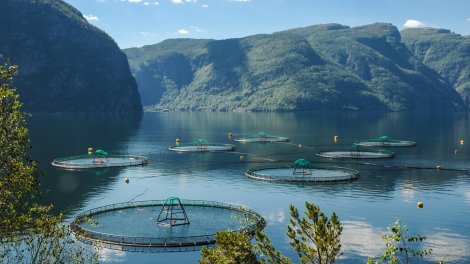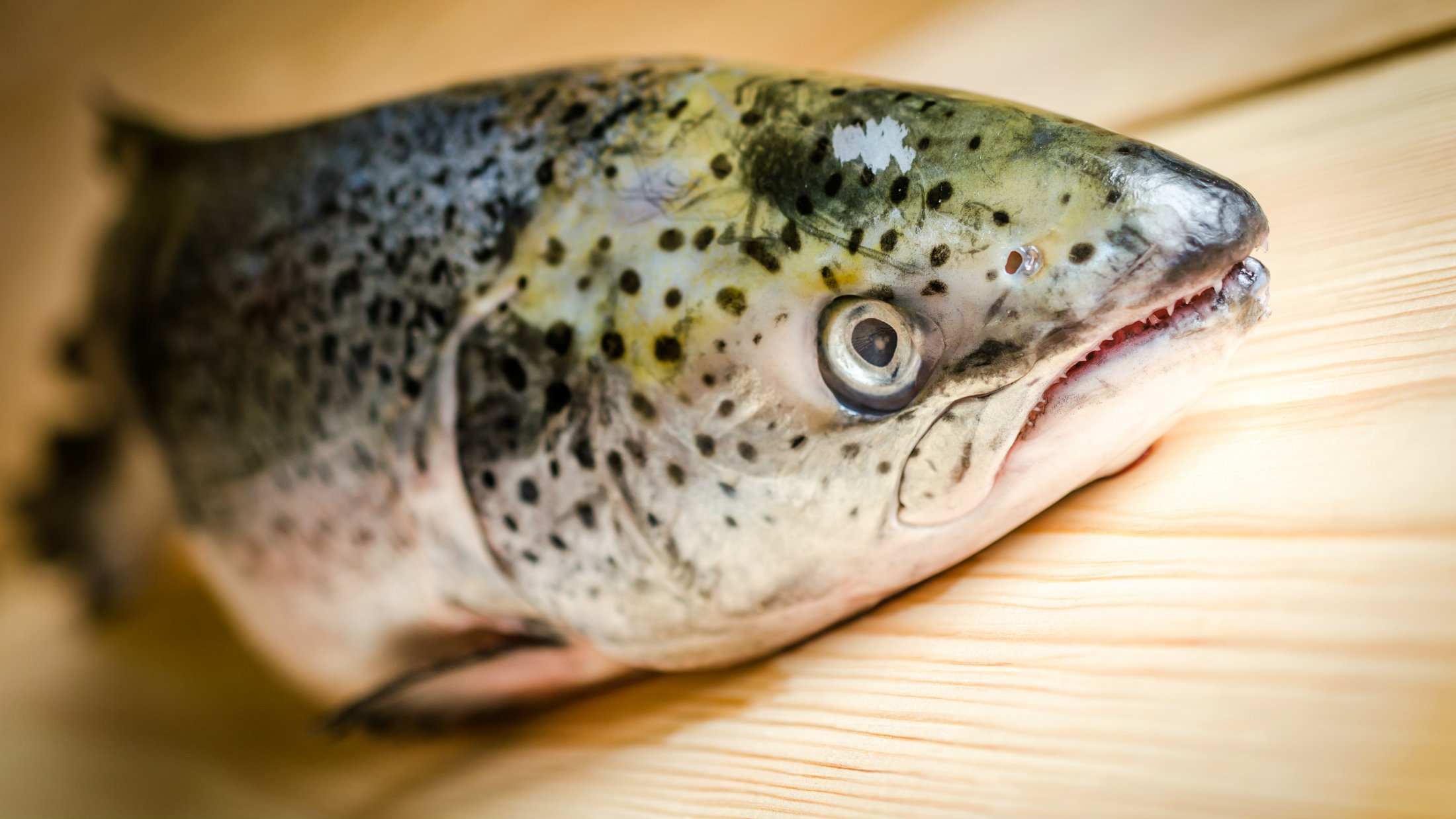Fish farming gets a lot of flack, and salmon often bears the brunt of it. Much of this has to do with the fish food — namely, the old saw that it takes an average of three pounds of wild fish to make one pound of domesticated salmon.
But then why is the Monterey Bay Aquarium’s vaunted Seafood Watch program, for the first time ever, giving ocean-farmed salmon its seal of semi-approval as a “good alternative”? What’s more, these salmon, from Verlasso, were spawned by agri- and aquacultural behemoths, DuPont and AquaChile, and fattened with the help of genetically modified organisms.
Let’s be clear: We’re not talking Frankenfish, as many have dubbed AquaBounty’s super fast-growing Atlantic-Chinook-salmon-eel hybrid. This time, the GMO in question is yeast — a bizarre microbe to begin with — with an algae gene spliced in. Since the frankenyeast (not as catchy, right?) is chock-full of the Omega-3s that salmon require, it can be used to replace most of the fish oil and fish meal in Verlasso’s feed.
That’s not a bad idea. About 87 percent of the world’s fish oil goes toward aquaculture, and about half of that is just for salmon farming. Since most fish oil is produced by juicing the small forage fish that make up the base of the already-strained ocean food chain, it is probably not in anyone’s best interest to turn them all into aquarium pellets. (Or nutritional supplements, but that’s a whole ‘nother can of fish guts.) While some fish oil can be rendered from leftovers that humans would rather not eat — livers and fish skin and brains, oh my! — at the moment this reclaimed oil only corners about a 10th of the market, according to fish food specialist Ron Hardy at the University of Idaho.
Since farmed pelagic fish need some long-chain fatty acids to grow, and humans need some to feel better about their diets, finding a viable source that doesn’t scourge the sea is probably a good idea. While you can also feed the fish straight algae, which is where the Omega-3s show up in the first place, at the moment, massive algae farms are, Hardy clarifies, “very spendy.” By moving the Omega-producing gene from ocean algae into the yeast, Verlasso gets an oil that’s less expensive, high in Omegas, and low in bycatch: Verlasso lox is produced with a slim ratio of one pound of wild fish in for every pound of salmon. (If GMOs get your goat, may I recommend our panic-free series on the subject.)

ShutterstockThis is what a salmon farm looks like, in case you wanted to know.
The company, whose tagline is “Harmoniously Raised Fish,” earned further eco-brownie points by stocking its pens with half as many fish as the industry standard, which helps keep all that salmon poo from piling up in the water system. It also leaves the fish healthier, less stressed, and much more svelte. Plus, the pens are left fallow for an average of six months at a time, to stave off devastating outbreaks of Infectious Salmon Anemia and plagues of sea lice without resorting to heavy preventative doses of antibiotics or pesticide. (It’s worth noting that the one category Seafood Watch watched a warning red flag was Verlasso’s chemical use, which makes up part of its integrated pest management system.)
All of which is reason to be optimistic about last month’s news that Verlasso landed a deal to test-market its salmon at Costco, the biggest of the big-box stores. With such supersized friends, Verlasso is not quite the spunky salmon maverick we might like to imagine, David-ing the Goliath salmon farms of a polluted yore — but that’s not a terrible thing. You don’t have to be an artisanal fisher feeding your family of four to be a careful steward of the environment. In fact, with sustainable seafood near the top of the list of restaurant trends for 2014, we think there’s lot to be said for big players who use their muscle to shift the scene in a green direction.
And other salmon is likely to be joining Verlasso in Seafood Watch’s good graces. In January, the Aquaculture Stewardship Council, a nonprofit certification program for responsibly farmed seafood, endorsed its first salmon farms. The first ASC-approved salmon went on sale in February. Fifteen of the world’s largest salmon outfits — responsible for some 70 percent of the market, including AquaChile — have committed to ASC-certify 100 percent of their fish by 2020.
And lots of other people and companies are looking at replacing the wild fish in food for salmon and other tasty teleosts (that’s for you, amateur ichthyologists). Some proposed solutions include soybeans, algae, or insects. “The aquaculture of the future is going to have to change worldwide from what aquaculture of the present is,” Verlasso director Scott Nichols told Grist. “People all over the world are going to need to raise their fish in different ways. So I don’t think that advancing the sustainability practices of aquaculture is something that is just a niche; I think it has to be very wide spread.”



